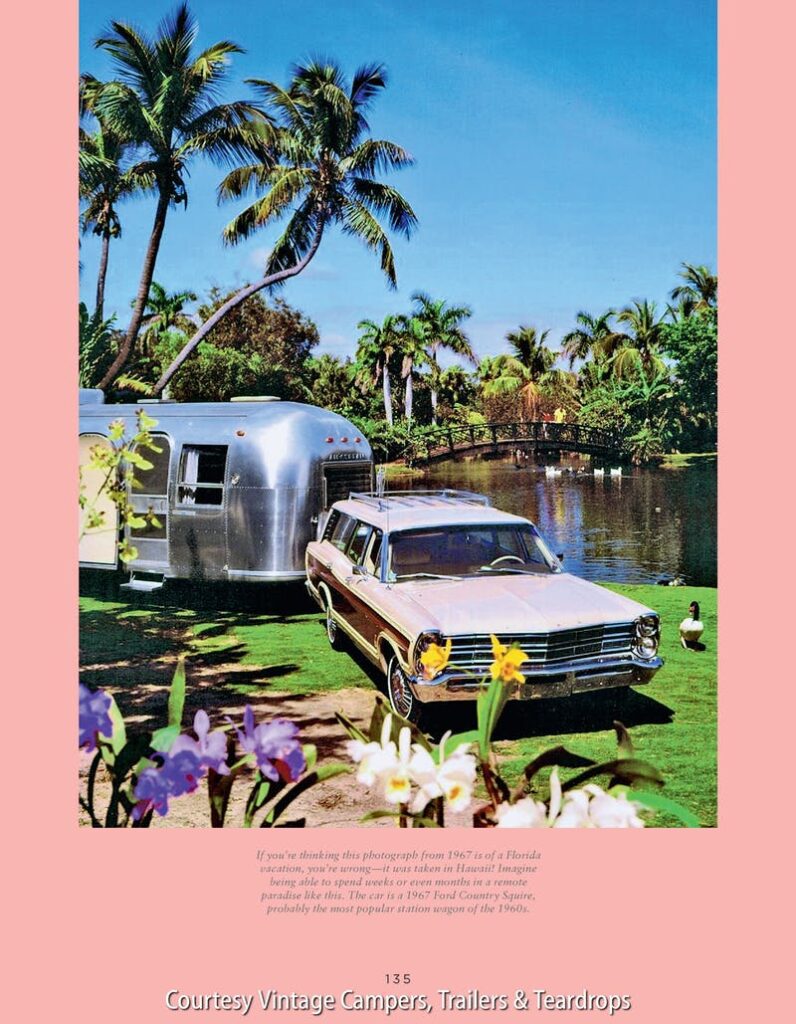
VINTAGE CAMPERS, TRAILERS & TEARDROPS
A nostalgic alternative to hotels and car camping
For all of recorded history, people have felt the urge to get away from it all, to travel, have adventures and see the sights, but to do so, we need to sleep somewhere. We either find lodging along the way, or bring our accommodations with us.
A beautifully illustrated, new hardcover book entitled “Vintage Campers, Trailers & Teardrops,” by American automotive historian Pat Foster, takes an unapologetically nostalgic look at the vintage campers, trailers and teardrops that many people are using today to meet their leisure travel accommodation needs, instead of staying in a hotel or just parking somewhere and sleeping in their vehicles.

While I will likely explore the subject of car camping more fully another day, I can personally confirm that the last alternative — sleeping in a car, can be very uncomfortable. Resting in a vintage camper, trailer or teardrop is a much better alternative.
The introduction to the book’s first chapter, entitled “Vintage Camping,” captures the sentiment of this book: “On vacation. Unavailable. Away for the week. Gone. Are there any sweeter words in the English language? It’s a fact: everybody needs to get away from it all now and then, to clear the brain, recharge the batteries, to just feel free for a change. And for millions of people around the world, the best way to do that is to hook a camper or trailer to the back of the family vehicle and head out. To freedom and the great outdoors. To live!”

Inside Chapter Two you’ll find photos of beautiful wooden teardrop trailers, as well as vintage steel-shelled trailers that were fondly nicknamed “canned hams.”

My first close-up look at a teardrop trailer was in 2006. As I reported then in a series of columns, I was midway through what would become my most memorable and enjoyable road trip across the United States.
At first, I led a group of people on a promotional tour for a company called Zap! that was publicizing its newly federalized, used and now for sale, SMART cars. Back then these tiny cars were not for sale in America. Mine was a 2002 model – perhaps from Canada. They were a curiosity and an unfamiliar sight on American roads.
While I was with the group, we stayed in hotels booked for us by Zap! After a few days our tour was so popular with the people that we met along the way, that we had fallen behind schedule. So, in order for me to meet my objective of getting to New York in time for the press days of their annual auto show, I had to split away from our group and continue to head east, on my own.
Some nights, to make up time, I slept in my fully loaded SMART car — but it was packed full of my belongings. I could barely recline my seat, so to compensate I slid the seat way forward, lifting my legs up over the gearshift lever and placing my feet in the passenger-side footwell.
Along the way I managed to make brief stops to check out the sights and take pictures. Since I am a fan of motorsports, including NASCAR racing, I stopped to check out Bristol Motor Speedway, in Tennessee.

There, in its parking lot, I spotted a tiny teardrop trailer — hooked up to a decidedly un-tiny SUV.

I approached its owners and, with their enthusiastic cooperation, we moved their teardrop trailer, positioning it behind my SMART car for a photo op.





Chapter Three of “Vintage Campers, Trailers & Teardrops” takes a nostalgic look back at the earliest days of trailer camping, beginning with the American Indians of the Plains tribes. They sometimes dragged a triangular sort of trailer — called a travois — behind a horse, from campsite to campsite. Consisting of two long, joined poles, it held their sleeping necessities and food.

Subsequent chapters of the book examine pickup shells and slide-in campers, vintage European camping, the VW phenomenon, vintage camper life, the Airstream history and pop-up trailers.

“Vintage Campers, Trailers & Teardrops” is a thoroughly enjoyable read, filled with color and black & white photography.
“Vintage Campers, Trailers & Teardrops” is available from Amazon and other booksellers. For more information, visit: www.quartoknows.com/books/9780760366813/Vintage-Campers-Trailers-Teardrops.html
